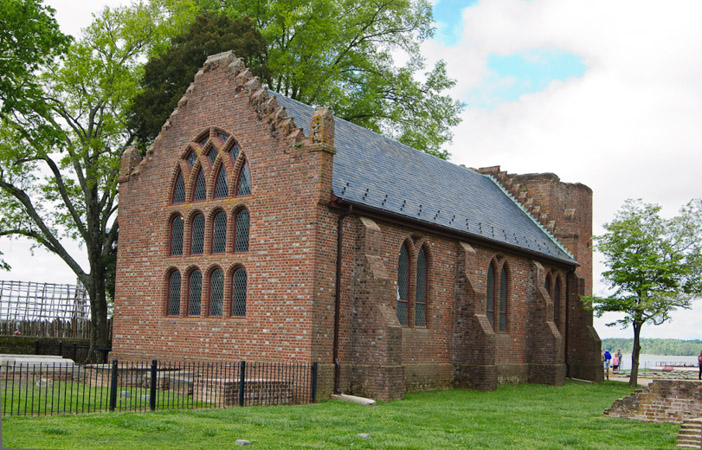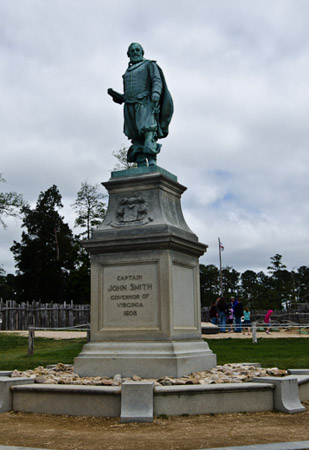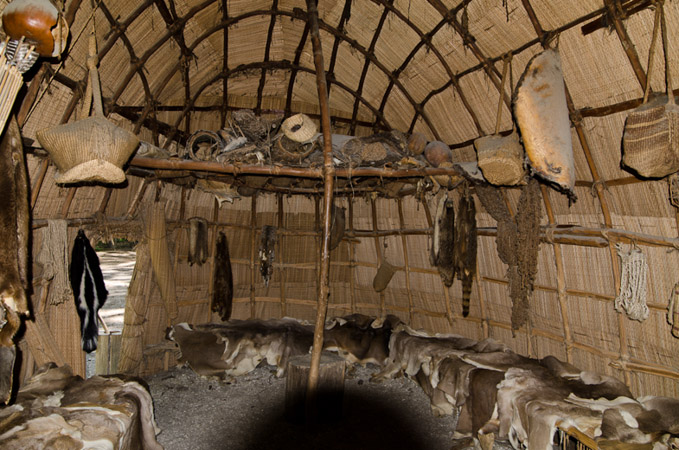Jamestown
 Jamestown is a short twenty minute shuttle ride from Williamsburg, VA. Jamestown became the first permanent English settlement upon the colonists landing on May 14, 1607, thirteen years before the Pilgrims landed in Massachusetts. Jamestown is an island and was originally selected, as it was thought to be easily defended.
Jamestown is a short twenty minute shuttle ride from Williamsburg, VA. Jamestown became the first permanent English settlement upon the colonists landing on May 14, 1607, thirteen years before the Pilgrims landed in Massachusetts. Jamestown is an island and was originally selected, as it was thought to be easily defended.
The Powhatan is the name of a Virginia Indian confederation of tribes. It may also refer to the leader of those tribes, commonly referred to as Chief Powhatan. It is estimated that there were about 14,000–21,000 Powhatan people in eastern Virginia when the English settled Jamestown in 1607. They were also known as Virginia Algonquians, as they spoke an eastern-Algonquin language known as Powhatan or Virginia Algonquin.
In 1608, Captain Newport realized that Powhatan's friendship was crucial to the survival of the small Jamestown colony. In the summer of that year, he tried to "crown" the paramount Chief, with a ceremonial crown, to make him an English "vassal." They also gave Powhatan many European gifts, such as a pitcher, feather mattress', a bed frame, and clothes. The coronation went badly because they asked Powhatan to kneel to receive the crown, which he refused to do. As a powerful leader, Powhatan followed two rules: "he who keeps his head higher than others ranks higher," and "he who puts other people in a vulnerable position, without altering his own stance, ranks higher." This illustrates how well meaning cultural differences contribute to and culminate in a feud.
The early settlers purchased their food from the local Indians and by 1609 developed a feud with the Indians. The Indians cut off their food supply and blockaded Fort James. British ships were sent to re-supply the colonists, but ran into a hurricane off the coast of Bermuda. Ships were lost, along with needed supplies, and by 1610 out of the 300 colonists on the island, only 60 survived.
Indians cut off their food supply and blockaded Fort James. British ships were sent to re-supply the colonists, but ran into a hurricane off the coast of Bermuda. Ships were lost, along with needed supplies, and by 1610 out of the 300 colonists on the island, only 60 survived.
The period from 1607 to 1610 are known as the starving years. None of the colonists were farmers and the island was swampy and mosquito infested. There was no fresh water on or near the island; shallow wells picked up the brackish (a mixture of salt water and fresh) water from the James River and made people sick.
After Chief Powhatan's death in 1618, hostilities with colonists escalated under the chiefdom of his brother, Opechancanough, who sought in vain to drive off the encroaching English. His large-scale attacks in 1622 and 1644 met strong reprisals by the English, resulting in the near elimination of the tribe.
By 1646, what is called the Powhatan Paramount Chiefdom by modern historians had largely been destroyed. In addition to the ongoing conflicts with the ever-expanding English settlements and their inhabitants, the Powhatan suffered a high death rate due to infectious diseases, maladies introduced to North America by the Europeans to which the Native Americans had developed no natural immunities.
Jamestown never did prosper and by 1699 the capitol of Virginia was moved to Williamsburg and stayed there until 1780 when it was again moved, this time to Richmond.
 King James issued the charter to the Virginia Company of London to establish settlements on the coast of North America. This was primarily a charter to make money to send back to the King. The first colonists were 104 men and boys, no women, with skills ranging from carpentry to no skill at all, none were educated or knew about farming.
King James issued the charter to the Virginia Company of London to establish settlements on the coast of North America. This was primarily a charter to make money to send back to the King. The first colonists were 104 men and boys, no women, with skills ranging from carpentry to no skill at all, none were educated or knew about farming.
After listening to the historical lectures, seeing the archeological ruins and reviewing the circumstances at Jamestown it appears that no one at the Virginia Company of London gave this operation much thought prior to sending the colonists to Jamestown.
It looks like they were all smoking hopium.
There are two separate sections on the island one is an archeological dig and has great historical value. The second section is a replica of the original Fort James with the buildings and Indian huts prevalent during the early years. The museum on the island was built in 1976 and houses a large inventory of items from the archeological dig. The staff of Park Rangers were all in period costumes and they know their history. A very interesting trip through a living history. To view the slideshow click here.